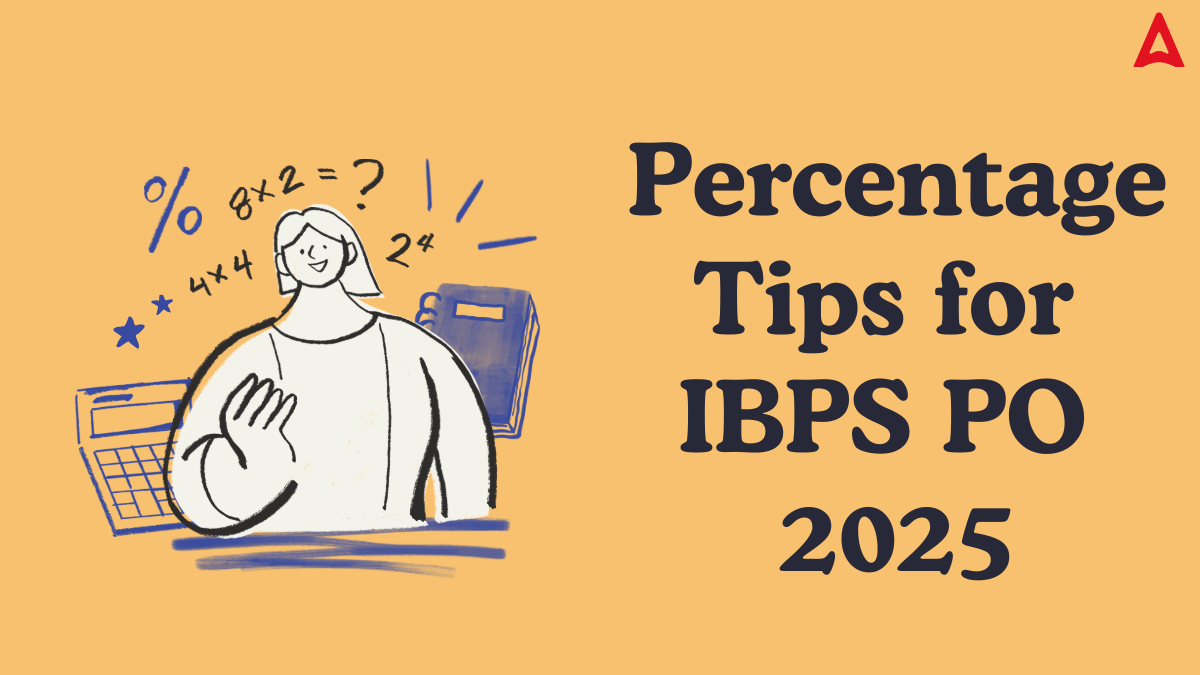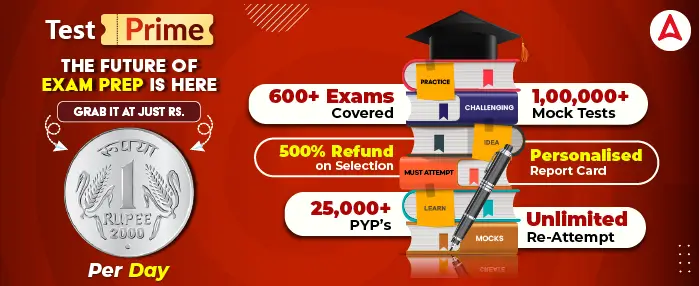Percentage is a foundational topic in the Quantitative Aptitude section of the IBPS PO exam. It plays a crucial role not just in standalone percentage-based questions, but also in topics like Data Interpretation, Profit & Loss, Simple & Compound Interest, and Time & Work. A strong grasp of percentage calculations can help candidates solve 10-15 questions quickly, saving crucial time for tougher problems. Percentage is not just a topic; it is a skill.
Percentage for IBPS PO 2025
A percentage is a way of expressing a number as a fraction of 100. It is denoted using the symbol “%”. For example, 40% means 40 out of 100. For IBPS PO 2025, a strong command over percentages can drastically improve your performance across the entire Quant section. To excel, candidates must move beyond basic formulas and focus on real-exam scenarios like successive discounts, population growth, and percentage change in ratios. The formula to convert percentages is:
Percentage = (Part / Whole) × 100
Value = (Percentage × Total) / 100
These basic concepts are the building blocks for solving more advanced quantitative problems.
Section 1: Core Percentage Concepts
| Concept | Formula | Example |
| Percentage Increase/Decrease | (Change/Original) × 100 | If price rises from ₹80 to ₹100, increase = (20/80)×100 = 25% |
| Fraction ↔ Percentage | 1/4 = 25%, 1/8 = 12.5% | Memorise conversions up to 1/20 |
| x% of y = y% of x | x% × y = y% × x | 28% of 50 = 50% of 28 = 14 |
| Net Percentage Change | a + b + (a×b)/100 | Successive changes of +20% & -15% = 20 – 15 – (20×15)/100 = 2% |
Section 2: Application of Percentage in IBPS PO Exam
(A) Profit-Loss & Discounts: Key Formulas:
- Profit% = (Profit/CP) × 100
- Selling Price = CP × (1 ± Profit%/100)
- Successive Discounts: Two 20% discounts ≠ 40% off! Use 20 + 20 – (20×20)/100 = 36%.
Example: A shirt marked at ₹800 is sold at two discounts of 15% and 10%. Final price?
Solution:
- First discount: 800 – 15% = ₹680
- Second discount: 680 – 10% = ₹612
- Shortcut: Net discount = 15 + 10 – (15×10)/100 = 23.5% → 800 – 23.5% = ₹612.
(B) Data Interpretation (DI): Common Scenarios:
- Year-on-Year growth rates in sales/production
- Market share percentages
- Percentage contribution to total
- DI Hack: When calculating % share, round off denominators for speed: If total = 4830 ≈ 4800 → 12% of 4800 = 576 (Actual: 12% of 4830 = 579.6).
(C) Interest & Population Growth
- Simple Interest: SI = (P × R × T)/100
- Compound Interest: A = P(1 + R/100)^n
- Population Growth: Similar to CI. If a town’s population grows at 10% annually for 2 years: Final = Initial × (1.10)².
Tricks and Shortcuts to Solve Percentage Questions
To ace this topic quickly, here are some essential tricks and shortcuts:
Use Fraction Equivalents (see table below): It helps save time in calculation-heavy questions.
Always break values into 100-based logic: This helps in visualising and estimating answers faster.
Use smart percentage values for estimation: Know common values like 10%, 20%, 25%, etc.
Apply reverse percentage techniques: Useful when finding the original price/number after an increase/decrease.
Use Approximation: Helpful in Data Interpretation sets where exact values aren’t always needed.
Percentage to Fraction Conversions
Here’s a ready-reference table of percentage to fraction conversions you should memorise:
| Percentage | Fraction | Shortcut Tip |
| 1/1 | 100% | Whole unit |
| 1/2 | 50% | Half |
| 1/3 | 33.33% 33 1/3% | Divide by 3 |
| 1/4 | 25% | Divide by 4 (or half of 50%) |
| 1/5 | 20% | Divide by 5 |
| 1/6 | 16.66% or 16 2/3% | Half of 33.33% |
| 1/7 | ~14.28% or 14 2/7% | Memorise as 14.3% (approx.) |
| 1/8 | 12.5% | Half of 25% |
| 1/9 | 11.11% or 11 1/9% | Repeating decimal |
| 1/10 | 10% | Move the decimal left once |
| 1/11 | ~9.09% or 9 1/11% | Useful for quick approximations |
| 1/12 | 8.33% or 8 1/3% | Half of 16.66% |
| 1/13 | ~7.69% or 7 9/13% | Rare but helpful in DI |
| 1/14 | ~7.14% or 7 1/7% | Half of 14.28% |
| 1/15 | ~6.66% or 6 2/3% | Close to 6.67% |
| 1/16 | 6.25% | Half of 12.5% |
| 1/20 | 5% | Useful for 5% increments |
| 2/3 | 66.66% | Double of 33.33% |
| 3/4 | 75% | 25% × 3 |
| 3/5 | 60% | 20% × 3 |
| 5/6 | ~83.33% or 83 1/3% | 100% – 16.66% |
| 7/8 | 87.5% | 100% – 12.5% |
Common Mistakes to Avoid in Percentage Questions
Even strong candidates make mistakes with percentages due to misinterpretation or rushing through questions. Here are some pitfalls to avoid:
- Confusing increase vs. decrease: An increase of 20% followed by a decrease of 20% doesn’t bring the value back to original.
- Forgetting to calculate on base value: Always apply the percentage to the correct base (e.g., original price, total population).
- Misplacing decimal points: When converting percent to a decimal, divide by 100 carefully.
- Skipping units: Especially important in profit/loss or interest-based questions where units matter.
- Avoid unnecessary calculations: Estimation is often enough for elimination in MCQs.
Practice Strategy for Percentage
- Start with conceptual clarity and basic formulae.
- Memorize all important fraction conversions.
- Practice 10–15 percentage-based problems daily.
- Solve mixed problem sets involving percentages + profit & loss, and time & work.
- Attempt previous year IBPS PO questions and mock tests focusing on DI.




 Number Series Questions for Bank Exams
Number Series Questions for Bank Exams
 Quadratic Equation Questions for SBI PO ...
Quadratic Equation Questions for SBI PO ...
 500+ Quantitative Aptitude Questions for...
500+ Quantitative Aptitude Questions for...








